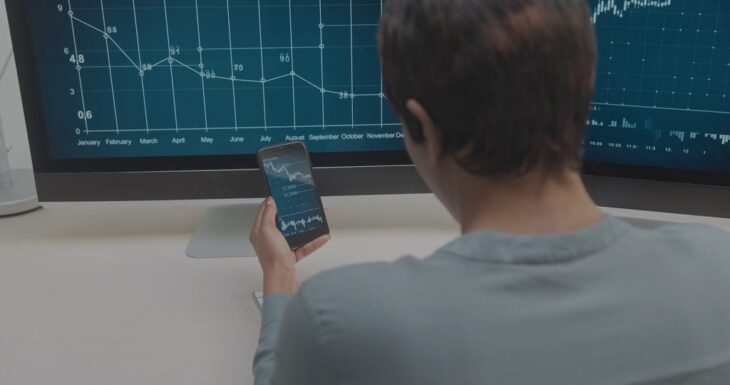Key performance indicators (KPIs) help risk managers maintain control and accountability in volatile business environments. They provide clarity by measuring progress and exposing vulnerabilities before they escalate into major setbacks.
Quarterly monitoring introduces consistency and cadence in risk evaluation, aligning strategy with current operational threats. Decision-makers benefit from timely insights that enhance foresight and response capability.
Measuring risk performance differs from tracking key risk indicators (KRIs), which focus on exposure and signals. KPIs, on the other hand, evaluate action and outcome.
When reviewed quarterly, they reveal both improvement and stagnation, creating opportunities for recalibration, realignment, and informed action.
1. Risk Identification Accuracy

Timely risk detection sets the stage for effective management. A practical way to measure progress is by comparing the number of newly identified risks to the previous quarter.
That reveals scanning patterns and internal awareness trends.
A spike in identified risks may suggest:
- Greater internal vigilance
- Enhanced detection tools
- Improved risk communication
A drop in numbers might point to:
- Detection blind spots
- Complacency
- Resource limitations
Proactive identification signals a business that scans and senses actively rather than reacts. Frequent horizon scanning, strong cross-functional inputs, and training all sharpen detection accuracy.
Teams engaged in early warning processes often surface emerging risks sooner, allowing faster mitigation.
An increase in identification paired with consistent mitigation shows program maturity. A plateau, on the other hand, may indicate tool fatigue or gaps in engagement.
Monitoring this metric each quarter strengthens risk sensing. Insights lead to upgrades in tools and stronger engagement across functions.
2. Risk Mitigation Effectiveness

Identifying threats carries little weight without resolution.
One of the strongest KPIs here is the percentage of high-risk issues resolved within set timelines.
Tracking this reveals two critical areas:
- Speed of response
- Quality of resolution
Consistent, timely resolution signals high ownership. Delays may stem from:
- Communication gaps
- Under-resourced teams
- Poor escalation structure
Reviewing this metric quarterly helps spot lagging teams and systemic blockers.
Quick fixes that unravel later often point to short-termism. Auditing closed risks validates solution strength, not just task completion.
Monitoring this encourages:
- Structured remediation discipline
- Training investments
- Risk tracking automation
Each cycle brings stronger confidence and fewer unexpected disruptions.
3. Actual vs. Predicted Risk Severity
Every risk model rests on assumptions. Comparing predicted and actual severity levels shows how reliable those assumptions remain.
This KPI highlights:
- Accuracy of scoring models
- Need for calibration
- Gaps in incident forecasting
When actual severity often exceeds predictions, the model may require stronger weighting or different criteria.
If actual severity remains lower, overly cautious assumptions may hold back business agility.
Useful discussions emerge from:
- Source quality review
- Scoring method recalibration
- Model iteration with real-world inputs
Regular tracking allows timely recalibration. Large mismatches in severity forecasts reduce confidence and can mask underlying analytical flaws.
4. Recurrence of Known Risks

Recurring threats reflect either incomplete fixes or unresolved root causes. One of the most revealing KPIs is the number of repeat occurrences of previously closed risks.
Tracking recurrence provides insight into how well mitigation efforts hold up over time.
A high-profile illustration is the Bard PowerPort lawsuit, where thousands of patients have reported repeated device failures such as catheter fractures and infections.
Despite widespread use, structural and material flaws led to recurring complications and escalating litigation. These issues underscore the danger of closing risks without addressing root causes or validating long-term effectiveness of fixes.
Closing an incident or risk event does not always mean it has been neutralized. Without thorough analysis and structural changes, the same issue may resurface under different circumstances.
Recurring risks often highlight superficial solutions, weak accountability, or an absence of post-incident reviews.
Quarterly monitoring of this KPI encourages risk teams to revisit closed cases with scrutiny.
It also supports the integration of lessons learned into standard operating procedures and training efforts. A drop in the recurrence rate reflects not only action but the sustainability of that action.
High recurrence should trigger a reassessment of closure criteria and root cause validation. Teams must investigate if fixes addressed symptoms rather than core issues. Continuous documentation of recurrence patterns may also expose deeper cultural or systemic weaknesses.
Visibility into this metric ensures that energy invested in mitigation yields lasting value.
It reinforces the importance of doing the job right the first time, making recurrence a rare exception rather than a familiar frustration.
5. Cost of Risk Management

Effective risk programs require resources. Balancing effectiveness with efficiency is critical. One KPI that provides a financial perspective is the total quarterly risk management spend as a percentage of the operational budget.
Monitoring this figure helps leadership gauge value delivery against investment. An increase in costs could suggest growing complexity, new regulatory requirements, or inefficiencies within the program.
A decreasing percentage may indicate process improvements, automation, or, more concerning, a gradual deprioritization of risk efforts.
This KPI supports internal benchmarking and comparisons across departments or units. Disparities in cost allocation may uncover areas receiving disproportionate attention or neglect.
Cost-conscious organizations must also evaluate whether high-spending areas are delivering measurable outcomes or merely consuming resources.
Quarterly assessment allows for early detection of budget overruns and hidden inefficiencies. It also supports ROI analysis on:
- Tools
- Training
- Risk consulting engagements
In tight budget cycles, this metric helps protect essential risk functions from indiscriminate cuts.
Transparent tracking of cost informs strategic decisions, promotes accountability, and ensures that investment in risk management aligns with the scale and complexity of threats faced by the organization.
6. Risk Assessment Coverage
Wide and routine assessment ensures no critical asset or vendor gets ignored. A reliable KPI here is the percentage of high-value assets or vendors assessed during the quarter.
Stronger coverage reflects:
- Consistent evaluation practices
- Engaged risk stakeholders
- Proper integration of new partners
Lagging coverage may indicate:
- Risk overload
- Staff turnover
- Misaligned priorities
Quarterly tracking supports:
- Audit preparation
- Balanced evaluation across units
- Prioritization of emerging areas
Assessing this metric keeps attention focused on high-impact areas. Broader coverage strengthens organizational resilience.
7. Policy Compliance Audit Findings

Policy adherence defines the boundary between structured performance and uncontrolled variability. A KPI that cuts straight to the core is the number of policy violations or audit exceptions identified per quarter.
Each finding tells a story about how well policies translate into day-to-day actions. High counts may reflect complexity, miscommunication, or intentional bypasses. Conversely, low findings could suggest effective training and integration, or poor audit depth.
Quarterly review of audit data helps surface trends and systemic weaknesses.
Are violations coming from the same functions or processes repeatedly?
Are certain policies too vague, outdated, or burdensome?
Pattern recognition helps separate isolated errors from structural flaws.
This KPI also supports dialogue with internal audit and compliance teams. Risk leaders can use audit data to prioritize improvement efforts, align training resources, and escalate control failures when needed.
Routine tracking fosters accountability and transparency. It pressures teams to close gaps quickly and helps compliance avoid reactive firefighting.
A downward trend in violations, coupled with consistent audit intensity, suggests a maturing control environment aligned with enterprise objectives.
8. Business Continuity Plan (BCP) Readiness
Crisis resilience depends on preparation. One clear indicator is the percentage of business units with tested and updated continuity plans.
Untested plans signal risk. Testing ensures:
- Up-to-date protocols
- Role clarity during disruption
- Working tools and systems
Quarterly reviews prompt:
- Regular simulation exercises
- Coverage validation across departments
- Updates based on recent changes
A high rate of tested plans reflects a readiness culture. Lower rates indicate friction, poor coordination, or misalignment. This KPI helps guide alignment between continuity planning and operations leadership.
The Bottom Line
Clear, consistently tracked KPIs allow risk managers to move from reactive problem-solving to forward-looking leadership.
Aligning these indicators with enterprise strategy and compliance requirements ensures that actions produce meaningful outcomes.
Risk is never static. Continuous refinement of KPIs helps teams remain agile and informed, avoiding complacency and ensuring alignment with real-world dynamics.

